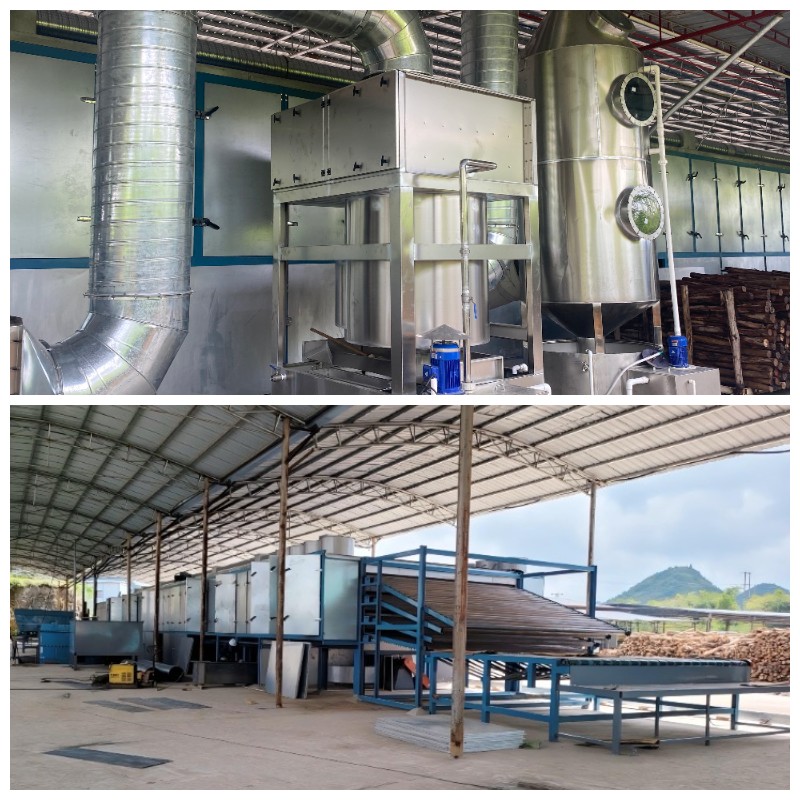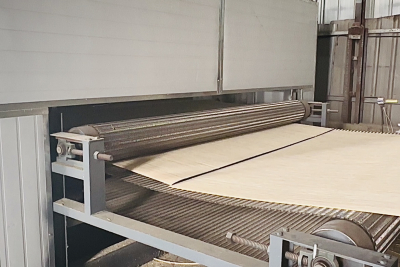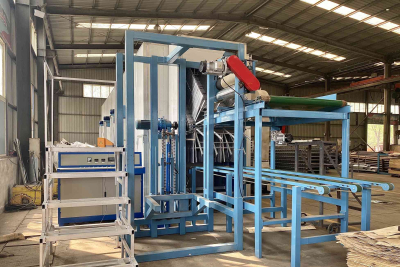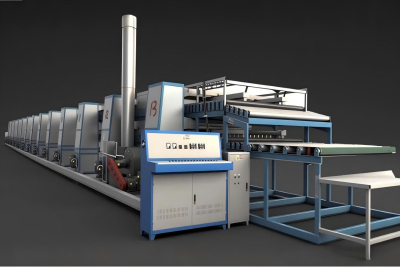Water Film Dust Removal: The Heart of Clean Veneer Dryer
In the world of wood processing, the veneer dryer is the undisputed heart of the production line, determining the final quality and stability of the plywood or laminated product. However, the drying process generates a significant environmental and safety challenge: vast amounts of fine wood dust and high-humancy exhaust gases. Effectively managing this byproduct is not just a regulatory requirement but a cornerstone of efficient and responsible manufacturing. This is where the Water Film Dust Removal System, a technology championed by industry leaders like Shine Machinery, proves its indispensable value. This system is far more than a simple filter; it is a sophisticated air-scrubbing solution engineered specifically for the demanding conditions of a modern veneer drying operation.
So, how does this system actually work? The process is a masterclass in mechanical and hydraulic principles working in concert to purify air. It begins when the hot, dust-laden exhaust from the veneer dryer is drawn into the system by an induced draft fan. The first line of defense is typically a cyclone separator. Here, the gas stream is forced into a circular path, creating a vortex. Centrifugal force flings the heavier, coarser dust particles against the walls of the separator. Having lost their momentum, these particles then fall into a collection hopper at the bottom. This initial stage removes a substantial portion of the larger wood chips and splinters, pre-treating the gas for the main event.
The pre-cleaned gas then enters the core of the system: the water film scrubber tower. This is where the magic happens. Inside the tower, an array of nozzles sprays a fine mist of water, creating a continuous, downward-flowing film of water on the inner walls. The gas, introduced from the bottom, moves upwards against this descending curtain of water. This counter-current flow is critical. As the gas and its burden of ultra-fine dust particles violently mix with the water droplets, an inertial impaction occurs. The tiny dust particles collide with and become trapped by the water droplets. Effectively, the water "captures" the dust, and the increased weight of these water-dust agglomerates causes them to drop out of the air stream and settle at the bottom of the tower as a slurry.
Before the now-clean gas is released into the atmosphere, it passes through a demister or mist eliminator. This component is essential for capturing any residual water droplets, ensuring that the exhaust is not only clean but also dry, protecting the fan and the stack from moisture-related corrosion. The final step is the handling of the collected slurry, which is periodically drained and treated, often in a settling pond where the water can be clarified and recycled.
The advantages of integrating a Water Film Dust Removal System from a provider like Shine Machinery are multifaceted. First and foremost is its remarkable efficiency. It can remove over 95% of particulate matter, including the light, fluffy fibers typical of veneer drying, ensuring compliance with even the strictest environmental regulations. Secondly, it is uniquely suited to the high-temperature, high-humidity exhaust of a veneer dryer. The system not only tolerates these conditions but uses the water to cool and condition the gas stream, enhancing operational stability.
A paramount advantage often overlooked is inherent fire safety. The veneer dryer environment, with its heated air and dry wood dust, carries a latent fire risk. A water film system acts as an impeccable spark arrestor; any ember or spark entering the unit is immediately quenched by the water curtain, preventing a catastrophic fire from propagating back into the production facility. Furthermore, compared to alternative technologies like baghouse filters, which are prone to clogging in humid environments, the water film system boasts a simple structure and easier maintenance. With no delicate filter bags to replace, the long-term operational and maintenance costs are significantly lower.
Of course, no technology is without its considerations. The system produces wastewater that requires proper management, typically through sedimentation and recycling. Additionally, the scrubber and fan must be constructed from corrosion-resistant materials like stainless steel or FRP to ensure a long service life.
In conclusion, for any serious manufacturer operating a veneer dryer, a Water Film Dust Removal System is not an optional extra but a essential component for sustainable production. Shine Machinery 's expertise in integrating this robust technology ensures that their drying lines deliver not only superior product quality but also operational safety, environmental responsibility, and long-term cost-effectiveness. It is this holistic approach to engineering that defines true leadership in the wood processing industry.






